We are just over a week into the beautiful, bountiful month of May and it is high time to sum up the last month on the land.

Many lovely pollinators were out and about and we managed to get one photo of the beautiful orange tip butterfly in flight.
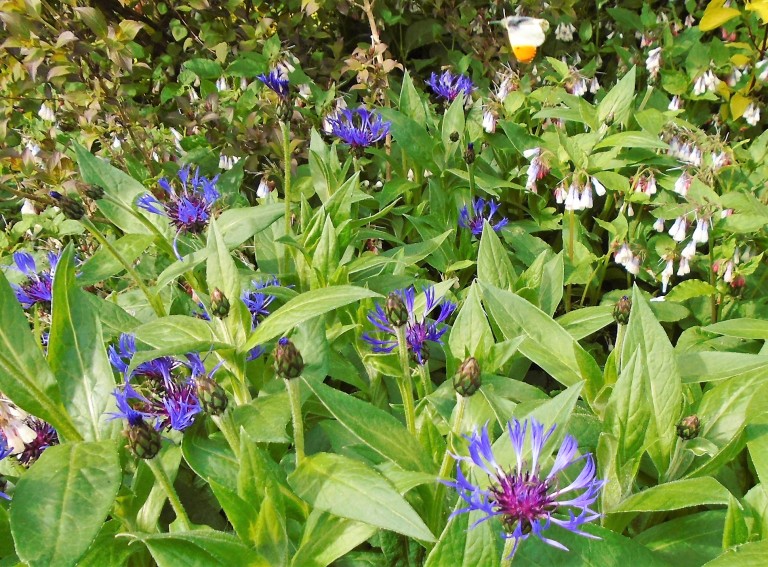
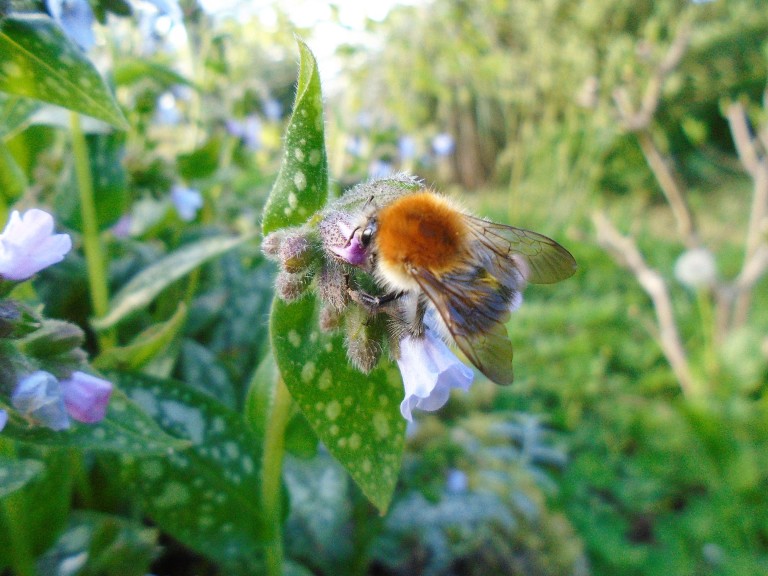

We have many different bumblebees on the land and it is such a joy to see all the berries and fruit flowers transforming into miniature fruitlets ready to grow and ripen up in the coming months. Our pears are already forming nicely.
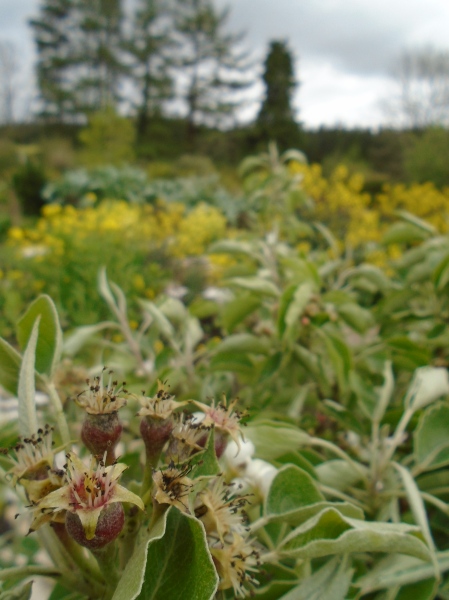
April brought a nice mix of sunshine and showers and we were delighted to see some of our more unusual fruiting trees and shrubs flowering for the first time. We wrote a post about some of the special members of our forest food garden a couple of years back. You can find it here.
The snowbell tree, Halesia Carolina has small bell-shaped flowers, followed by winged fruits in midsummer. We are looking forward to hopefully tasting our firsts in salads this summer.

Another interesting tree is the Siberian pea tree, Caragana Arborescens, the only legume to grow on a woody perennial plant. We hope these yellow flowers will develop into tasty peapods in a couple of months.

The strawberry tree, Arbutus Unedo, is growing well but has yet to set fruit.
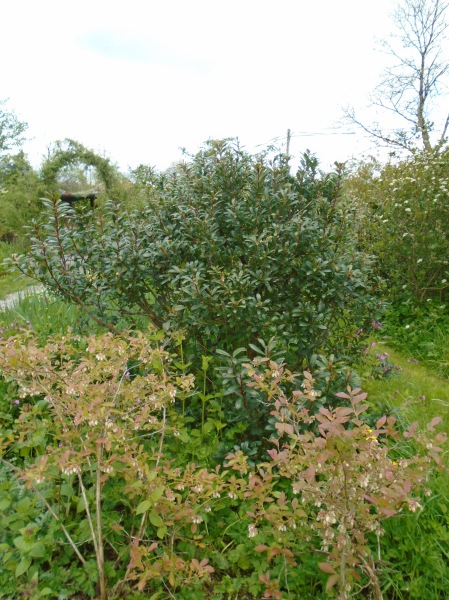
We have a lovely purple corkscrew hazel, Corylus avellana ‘Red Majestic’ and we are hoping for some tasty hazelnuts in the autumn.
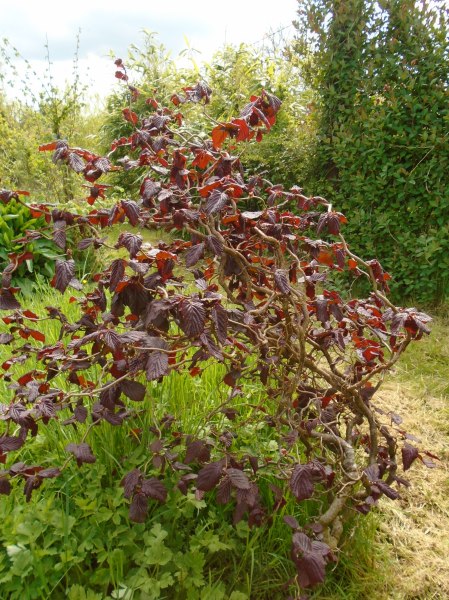
There are also many edible groundcovers that can be of interest in a forest garden and we have planted an edible fiddle head fern, Matteuccia struthiopteris, also called the ostrich fern. The parts that are eaten are the young tightly spiralled fronds. Our ferns are still small but perhaps next year we will be able to taste a few. They do require boiling before they can be eaten safely. Most other ferns are toxic.

We are also naturalising wild garlic, Allium ursinum in the woods. It is such a versatile and tasty spring delight.
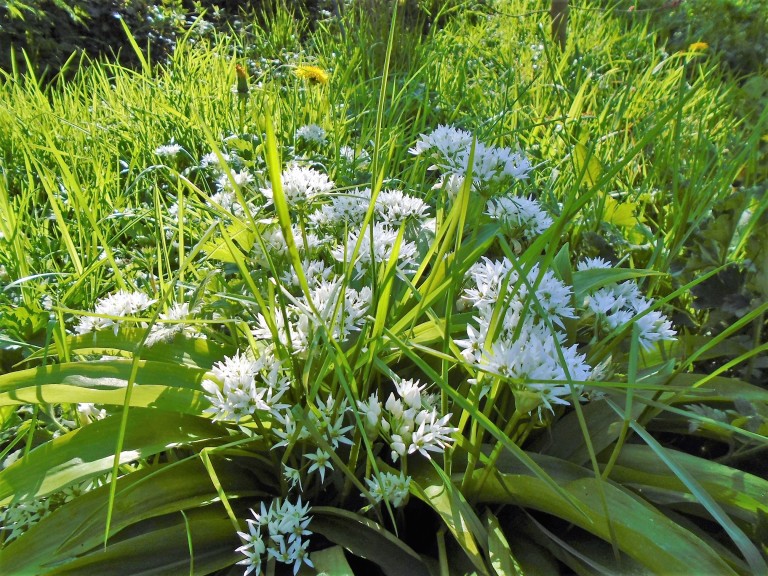
Sweet cicely, Myrris odorata is another lovely groundcover plant in the forest garden.
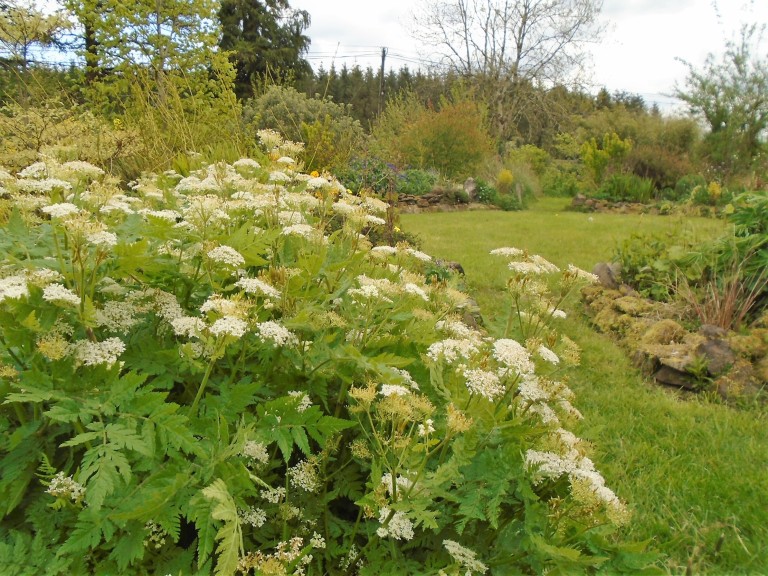
These shrubs are chokeberries, Aronia Melanocarpa and Arbutifolia, and we grow them for the berries that have many benefits to the body. They are not very tasty on their own so we tend to mix them into smoothies.


Around the main circle plants are looking green and lush and we hope that the late frosts will not create too much damage to tender leaves and buds.

East

South

West

North
In the coming month we will be busy planting out all the vegetables seedlings in their final positions in the raised beds, mulching everywhere and sowing many more vegetable seeds. May is an incredibly busy month on the land preparing for the growing season ahead but it is also one of the most beautiful times of the year and we make sure to stop working now and again and just take a slow walk through the winding paths around the garden. There is no place we would rather be.




These are brilliant photos of some of the plants in the garden. April flew by quickly.
LikeLiked by 1 person
Yes it did fly by quickly. Hopefully May will feel a bit longer. 💖🌱💖
LikeLiked by 1 person
I have never seen a single nut on a corkscrew filbert. I figured that it was fruitless. Nor have I heard of growing the strawberry tree for fruit. I know it makes edible fruit, but most of us just leave it for the birds.
LikeLiked by 1 person
We have had a lot of nuts on our green leaved corkscrew hazel. The red one is still small but it has catkins and show all signs of bearing fruit. Maybe the ones you have come across are grown without other hazels to cross pollinate with? We have the ordinary native variety as well as red filbert, purple filbert, cob nut Cosford’s cob, Colurna Turkish hazel and two corkscrew varieties. I have heard some people describing the fruit of the Strawberry tree as unpalatable but others have described it as delicious. I guess we will have to wait and see. Maybe the birds are in for a feast! It is never the less a lovely tree. The bark is very beautiful along with the flowers.
LikeLiked by 1 person
Some of the corkscrew hazels are with friends, either in production nurseries, or in landscapes with two or three of the same; . . . but they are all the same. I mean, they all are copies of the same cultivar, with no other different hazels around. The natives make only a few very tiny nuts. They are good, but rare and very small. I just got my first American hazels a few years ago. I realy want to see what they do.
LikeLiked by 1 person
That is interesting. I have not heard of the American hazel. Could you try planting them close to a corkscrew variety?
We have lots of big nuts on the native hazels here and they seem to crosspollinate very well with all the different varietes.
LikeLiked by 1 person
It goes by both names, ‘hazel’ and ‘filbert’. I do not know what the difference is. The native that grows wild here is the Western filbert or hazel. It is not so impressive. Those that are grown for nuts are of course the same as those imported from Europe a very long time ago.
LikeLike
I think that the fruit of the strawberry tree can be good, but is very perishable. Supposedly, it must be taken right when it ripens. if too dark red, it is starchy and lacks flavor.
LikeLiked by 1 person
Thanks for the info! I will keep that in mind if we ever get a crop. 🙂
LikeLiked by 1 person
You are welcome.
LikeLike